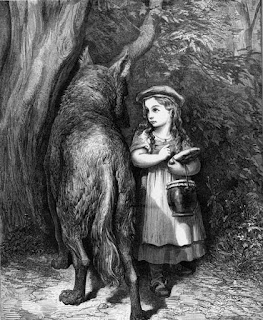Mythology; Cosmogony & Fairy Tales
Period 1:
Prometheus (Greek) (cosmogony)
Pandora's Box (Greek) (cosmogony)
Orpheus & Eurydice (Greek) (legend)
The Least Known Greek Pantheon (Greek? pantheon) (parody)
Work on your myth documentary projects.
Period 2: Fairy Tales
Take 5-10 minutes. Brainstorm your favorite fairy tales. Which fairy tales were your favorite (or are your favorite)? Why do you like this/these stories? Discuss a favorite fairy tale with a partner or neighbor. Together discover how the stories might be similar or have similar elements. Be ready to share out what you discussed. I will ask each pair to share out.
Prometheus (Greek) (cosmogony)
Pandora's Box (Greek) (cosmogony)
Orpheus & Eurydice (Greek) (legend)
The Least Known Greek Pantheon (Greek? pantheon) (parody)
- Writing Task: Write a poem about one of the myths--use the mythology cycle you are researching or pick a favorite god/goddess/hero/legend that you are familiar with (see handout for models)
- Writing Task: Create your own pantheon (what would the gods/goddesses/legendary figures would you create if you created your own pantheon? What would the pantheon you are researching be like if they existed today? Ex. Percy Jackson)
- Create a story (fiction) in which you explain how your character discovers fire, death, good/evil, or some human quality or trait central to our existence (ex. how humans came to be cursed with cancer or the "first disease", how the heavens were formed, how mischief came to exist, how sadness entered our world, how trust overcame the dark forces of evil, how friendship came to be, where rain/snow really comes from, etc.)
- Creation ex nihilo (out of nothing): creation from nothing
- Earth Diver: a "diver" (aquatic) animal digs up the earth from the abyssal depths of an ocean.
- Emergence: the world appears from the body of a primordial being or through metamorphosis or passes through other "worlds" to come into being.
- Cosmic Egg: creation from a cosmic egg
- Order Out of Chaos (creation from chaos): order/the world is created from primordial chaos
Classwork: Continue to work/research your chosen pantheon. Your project should include a creation myth, a legend or story from your researched myth cycle, and a short explanation of the major gods/goddesses within that tradition/culture (3 basic elements to your documentary).
Period 2: Fairy Tales
Take 5-10 minutes. Brainstorm your favorite fairy tales. Which fairy tales were your favorite (or are your favorite)? Why do you like this/these stories? Discuss a favorite fairy tale with a partner or neighbor. Together discover how the stories might be similar or have similar elements. Be ready to share out what you discussed. I will ask each pair to share out.
The Archetypal Fairy Tale
• Stories, often told to children, to entertain, instruct or teach
• Often used to illustrate the problems that children and young people face as they become adults
--What might be some of these typical problems?
--What might be some of these typical problems?
• The characters in fairy tales represent part of our own “psyche” or inner self
Common themes in fairy tales include:
• Metamorphosis• Transformation• Imprisonment• Love• Good versus evil (overcoming obstacles)• Death or transition• Illusion or misunderstanding• Rules or authority
There are often boy and girl fairy tales. These differ in plot.
• Boy fairy tale plots focus on exploration, discovery, and include a climax which separates the boy from his childhood. Usually by the end, the boy has grown into a man.
• Girl fairy tale plots focus on discovery as well, but also abduction, outside threats, powers beyond their control, and falling in love. Usually by the end, the girl has grown into a woman.
Think, Pair, Share (5 minutes): knowing this, apply what you've just learned to the fairy tales you know. What kinds of fairy tales have these been? Were your favorite fairy tales boy or girl fairy tales? Discuss.
Fairy Tale Characters
• Often good, innocent, or sometimes foolish.
• Often instructed by an older person or character (sometimes a mystical creature)
• Often fairy tale characters have to face great odds
• Often fairy tale characters are given an item(s) that allows them to discover who they are
Fairy tale form:
• Usually written in 3rd person point of view with an omniscient narrator
• Usually begins with “Once upon a time…” and ends “happily ever after.”
• Usually include the rule of 3 (the first two times a character tries something, it usually doesn’t work)
Lab Task:
Read this short article: http://www.bbc.com/culture/story/20130801-too-grimm-for-children
Then check out these websites: http://www.pitt.edu/~dash/grimmtales.html
German: The Brother's Grimm
Danish: Hans Christian Andersen
French: Charles Perrault
Lab Task:
Read this short article: http://www.bbc.com/culture/story/20130801-too-grimm-for-children
Then check out these websites: http://www.pitt.edu/~dash/grimmtales.html
German: The Brother's Grimm
Danish: Hans Christian Andersen
French: Charles Perrault
- Choose a fairy tale that you want to work with (consider your favorites--or strike out into the unknown with a story you are not familiar with and read it. Be unique and consider one that is not as well known)
- Write a narrative or prose poem or a story or scene or an essay in which you explore gender and fairy tale themes. Use the archetypes and characteristics of a fairy tale to tell your own.
Gender & Mythology: Why men? Fathers & Sons (archetypes and male divinities: crash course)
Use whatever time we have left writing (or read Grendel).
HOMEWORK: Continue writing what you started in class today. Keep reading Grendel. Note the major characters and follow the plot. Bring your books back with you to next class. Aim to finish reading the book by the end of the week.
Use whatever time we have left writing (or read Grendel).
HOMEWORK: Continue writing what you started in class today. Keep reading Grendel. Note the major characters and follow the plot. Bring your books back with you to next class. Aim to finish reading the book by the end of the week.


Comments